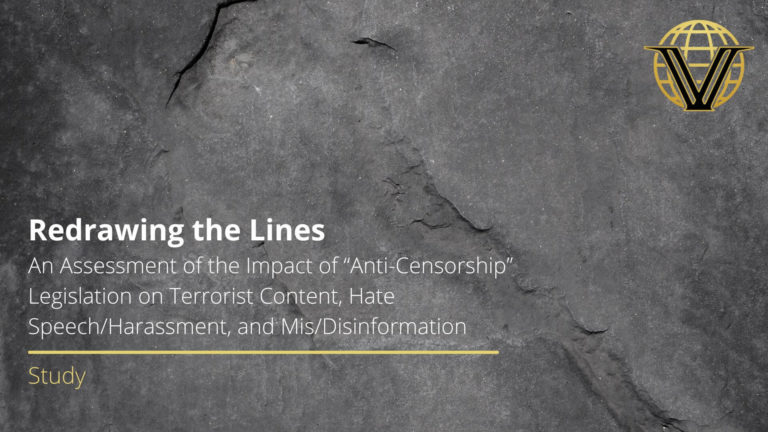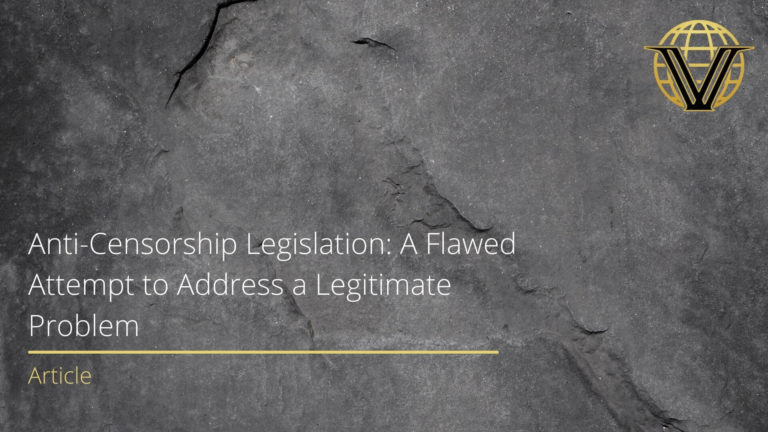Bridget Moreng and Nathaniel Barr
To judge from the commentary about the Metrojet plane crash in Egypt’s Sinai Peninsula and the recent terrorist attacks in Paris, the self-proclaimed Islamic State (also known as ISIS) has significantly changed its strategy in the last few weeks. Until the most recent wave of attacks, conventional wisdom went, ISIS focused almost exclusively on establishing a caliphate and expanding the boundaries of its state in Syria, Iraq, and the surrounding region. Unlike al Qaeda, which had long focused on striking the far enemy (the United States and Europe, including Russia), ISIS confined its operations outside of its immediate region to inspiring attacks by ISIS sympathizers and adherents living in the West. The Sinai and Paris terrorist attacks thus signified a new direction.
The only problem is that the strikes do not mark a strategic shift for ISIS. Rather, they represent the culmination of the group’s long-standing ambitions to carry out mass-casualty, high-profile attacks against the far enemy. For over a year, ISIS propaganda has expressed that very intention. And the group has tried to make good on its threats. Since the beginning of 2015, ISIS operatives in Syria and Iraq have been involved in the planning of several high-profile plots against Western targets. If not for luck and good investigative work on the part of Western intelligence agencies, ISIS would have succeeded in striking the West months ago.
FIGHTING WORDS
ISIS threats against Western targets are sometimes veiled and ambiguous, but a close reading of the group’s propaganda reveals its intentions. In January 2015, ISIS spokesperson Abu Mohammed al-Adnani released a statement in which he praised ISIS sympathizers for carrying out plots in Australia, Belgium, Canada, and France and called for Muslims to use any weapon available to inflict damage upon the “crusaders.” After encouraging such lone wolf attacks in the West, Adnani issued a more ominous threat: “What lies ahead will be worse—with Allah’s permission—and more bitter, for you haven’t seen anything from us just yet.”
Statements in Dabiq, ISIS’ English-language online magazine, have also provided a window into the organization’s intentions toward the West. In the fourth issue (released in October 2014), ISIS made its strategic priorities clear, noting that it is “very important that attacks take place in every country that has entered into the alliance against the Islamic State, especially the US, UK, France, Australia, and Germany.” This declaration, unlike Adnani’s, was unambiguous.
If any further proof of ISIS’ global aspirations was needed, the group provided it in the eighth issue of Dabiq, which was released in March 2015. In an article, John Cantlie, the British hostage and conscripted ISIS propagandist, posed a provocative question: “How many more Westerners will die? The way things are going at the moment, the answer is many. France, Belgium, Denmark, Australia, and Canada, have all been the targets of mujahidin attacks over the last three months alone, and as more Islamic fighters . . . pledge allegiance to the Islamic State, such attacks will surely only become more numerous and better-executed.” Although the last line may have appeared as bluster at the time, the comment was a grave indication of ISIS’ burgeoning external operations capabilities.
FROM LONE WOLVES TO VERVIERS
Although ISIS has frequently threatened to attack the West, analysts have long argued that the group’s rhetoric did not match its capabilities. Some experts reasoned that the organization’s central leadership was concentrated on fighting local regimes and nonstate Shiite forces in the Middle East and was thus unwilling to invest serious resources in plotting complex attacks against the West. With its Western strategy based on lone wolf attacks, the ISIS threat to the homeland seemed manageable. As noted by Juliette Kayyem, former Assistant Secretary for Intergovernmental Affairs in the U.S. Department of Homeland Security: “We can withstand random guys with low-level attacks and minimal consequences.”
In fact, lone wolves provided a strategic distraction that the group used to mislead the West about its capabilities as it plotted spectacular attacks. ISIS’ external operations capabilities have rapidly evolved since the group declared its caliphate in June 2014. This was thanks in large part to the involvement of several key European ISIS fighters, including the British national Junaid Hussain, who was linked to several plots in the United Kingdom and the United States, including the May 2015 shooting at a venue hosting a “Draw Muhammad” contest in Garland, Texas. Another key player was Salim Benghalem, a French jihadist described as being in charge of ISIS’ French foreign fighter network, whom Western intelligence agencies have implicated in the recent Paris attacks.
With foreign fighters such as Benghalem and Hussain spearheading ISIS operations in Europe, the group soon began plotting complex, high-profile attacks on the continent. One of the first concrete signs of ISIS’ European ambitions came just days after the January 2015 Charlie Hebdo attack, when Belgian police killed two militants and arrested another in a raid in the town of Verviers. Investigations revealed that all three men had fought with ISIS in Syria and were using a house in the town to store weapons and build explosives. Belgian officials warned that the cell was preparing for a major ISIS attack in Belgium. They also learned that the Verviers cell was in contact with Belgian ISIS member Abdelhamid Abaaoud, who is believed to have served as the key intermediary between ISIS senior leadership and the Verviers cell (and was eventually implicated in the Paris attack).
If there were any doubts about ISIS involvement in the Verviers plot, the group put them to rest in the seventh issue of Dabiq, released in February 2015. In an interview in the magazine, Abaaoud revealed that he and two other Belgian ISIS members had traveled from Syria to Belgium to “terrorize the crusaders waging war against the Muslims.” Abaaoud further explained that his foreign fighter cell had managed to “obtain weapons and set up a safe house while [they] planned operations against the crusaders.”
The Verviers cell was the first clear sign of ISIS’ ambitions in the West. But amid the tumult that followed the Charlie Hebdo attack, it went largely unnoticed.
MORE MISSED SIGNALS
In the months between the Verviers plot and the Russian plane crash, several more plots emerged that demonstrated ISIS’ magnitude and geographic reach. In April 2015, several teenagers were arrested in Melbourne, Australia in what was described by police as a “major counterterrorism operation.” Australian authorities later revealed that the Melbourne cell had planned a gruesome attack on Anzac Day (Australia and New Zealand Army Corps Day), in which the plotters would run over a police officer, behead him, and then use his weapon to carry out a shooting spree in Melbourne. Investigators also announced that the ringleaders of the plot had been in frequent contact with Australian ISIS member Neil Prakash, who had attended Melbourne’s al-Furqan center, a mosque that the Melbourne operatives had also frequented, before he left for Syria. According to reports, Prakash maintained his relationships with al-Furqan mosque attendees after he arrived in Syria, directing them to carry out domestic terror attacks in Australia rather than coming to Syria. Prakash’s role in the Anzac Day plot illustrates how ISIS foreign fighters coordinate with their compatriots to carry out attacks at home.
Prakash was not the only foreign ISIS fighter with aspirations to strike his homeland. As previously mentioned, Junaid Hussain, a British citizen who joined ISIS in 2013, was involved in several plots in the United Kingdom. One of his plans was to detonate a pressure cooker bomb at the Armed Forces Day parade in June 2015, but the plot was disrupted when he leaked details to an undercover journalist. The pressure cooker plot was one of seven disrupted terror plots in the United Kingdom since November 2014, including multiple plots directed from Syria.
Hussain, who was killed during a U.S. air strike in August 2015, was also involved in organizing what could have been a major attack in the United States. In the weeks prior to the Fourth of July holiday, the FBI publicly voiced concerns about an increase in chatter related to an ISIS attack, and former CIA Deputy Director Michael J. Morell gravely warned the public on June 29about U.S. terror attacks, saying that he wouldn’t be surprised if an attack occurred during the coming holiday. At least ten U.S. citizens were arrested in the lead-up to July 4, and intelligence officials later revealed that strikes had been planned across the country, with ISIS recruiters based in Syria identifying potential terror operatives in the United States and encouraging them to strike around the holiday weekend. Although the attacks planned forJuly 4 may have been minor when considered individually, the impact that a wave of coordinated attacks during the United States’ most popular holidays would have had devastating impacts on the national psyche and economy.
After months of failed and foiled plots against Western targets, a confluence of factors enabled ISIS to succeed in Paris. Luck was certainly involved, as is the case with any successful terrorist attack. However, luck typically favors terrorists, especially if they make a consistent effort to plot and carry out attacks. As the Irish Republican Army remarked in the aftermath of a failed attempt to kill British Prime Minister Margaret Thatcher in 1984, “You have to be lucky all the time. We only have to be lucky once.”
More important than luck, however, was the ability of ISIS operatives to learn from their mistakes and to exploit gaping holes in European security and intelligence capabilities. The Paris attacks provided definitive evidence that European intelligence agencies are overwhelmed by the scale of the foreign fighter challenge and are struggling to monitor those who return from war abroad and may pose a threat to domestic security. At least five of the operatives involved in the Paris attack had traveled to Syria to fight with ISIS. Abaaoud, the ringleader of the Paris plot (who was also involved in at least four other foiled plots in France), managed to move back and forth between Europe and Syria after his implication in the Verviers plot. With a battle-tested militant such as Abaaoud, it was just a matter of time before one of his plots would succeed.
REASSESSING THE THREAT
It has become increasingly clear that top ISIS leaders in Iraq and Syria planned the Paris attacks, rather than operatives farther down the chain of command who acted of their own accord, and that the group’s strategy toward the West is far more robust than once assumed.
Understanding ISIS’ far enemy strategy can help us comprehend what the group aims to achieve by striking the West. There is no question that the competition between ISIS and al Qaeda for jihadist supremacy has factored into ISIS’ strategic calculus. By carrying out high-profile attacks against Western targets, ISIS can undercut al Qaeda’s reputation, which increases the group’s appeal to jihadist foot soldiers who may be tiring of al Qaeda’s strategic patience and pragmatism. In the days following the Paris attacks, ISIS released at least two videos directed at supporters of al Qaeda in the Arabian Peninsula, both of which highlighted the group’s recent external operations as reasons why AQAP members should join its ranks.
A look at nearly a year’s worth of ISIS-directed plots against Western targets provides context for the Paris and Sinai plots, making them seem less like anomalies. These two attacks mark a shift in scale and outcome—and one could argue that the most recent attacks would have overshadowed any of the previous plots if they had been successful as well. But interpreting Sinai and Paris as part of a major strategic realignment overlooks a fundamental aspect of the ISIS worldview.
In light of the Paris attacks, it is important that analysts—both inside and outside the government—make an effort to rethink how they interpret the material that ISIS releases. The group’s leaders have not been secretive about their plans to attack the West and even allowed intelligence officials to obtain crucial details about its cell in Belgium long before it carried out the attacks in Paris. Hindsight is often 20/20, of course, and it’s not always easy to separate the group’s legitimate threats from its inflated rhetoric. But while the group produces a flood of propaganda material—a great deal of which is aimed at exaggerating its capabilities—it’s crucial to look closely at signals ISIS is providing. We must become better at extracting these signals to better understand the group’s past pattern of behavior and likely future course of action.
It is very likely that ISIS will continue to plot spectacular attacks in the West, something that Western governments should acknowledge and prepare for. This means that European states must address their porous external borders and improve upon poor intelligence sharing, two vulnerabilities that jihadists will continue to exploit. The Paris and Sinai attacks have provided clear evidence that ISIS poses a real and legitimate threat to security in the West and should not be viewed as just a regional nuisance.



